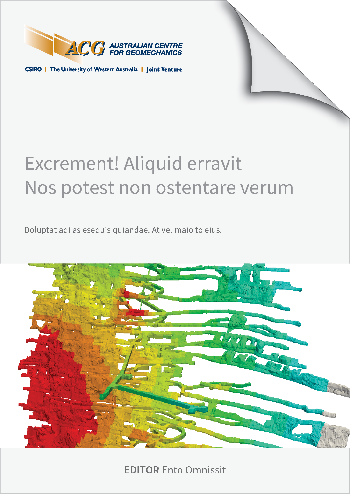Predictive subsidence analyses for the next 40 years of mining at CODELCOs El Teniente division

|
Authors: Alvarez, C; Barra, C; Díaz, J; Constanzo, H |
DOI https://doi.org/10.36487/ACG_repo/2435_O-12
Cite As:
Alvarez, C, Barra, C, Díaz, J & Constanzo, H 2024, 'Predictive subsidence analyses for the next 40 years of mining at CODELCOs El Teniente division', in Daniel Johansson & Håkan Schunnesson (eds), MassMin 2024: Proceedings of the International Conference & Exhibition on Mass Mining, Luleå University of Technology, Luleå, pp. 1385-1394, https://doi.org/10.36487/ACG_repo/2435_O-12
Abstract:
Long dated and extensive panel caving operations in CODELCO Chile´s El Teniente Division (DET) have created a significant subsidence crater in the Andes mountains at an elevation around 2500 m above sea level. Mine planning for the next 40 years considers deepening levels which will affect current crater boundaries. Historically, DET has been using proprietary empirical methods to estimate back break angles, however these methods are very conservative for footprints below existing operations, since they ignore the effects of the overlaying caves. Numerical methods can capture complex stress conditions when simulating the emerging cave caused by ore drawing. Caving simulation was implemented within FLAC3D, following a rigorous mass-balance routine to ensure that the designed production schedule is represented accurately, along with a strain softening constitutive model appropriate for a caving environment. As a first step, the model subsidence (crater) was calibrated for a 5-year period to validate the model considerations. The calibration was based on an approach already used in previous analyses for DET (albeit for localized sectors) requiring minor modifications and further validating the overall numerical framework. After this, predictive analyses were developed to assess the overall impact of caving, providing predictive results for a 40-year time span. Subsidence is evaluated in terms of estimations of cave break and fracturing zone, which evolve according to the combined effect of stress distributions and rock mass parameters, among other parameters.
© Copyright 2025, Australian Centre for Geomechanics (ACG), The University of Western Australia. All rights reserved.
View copyright/legal information
Please direct any queries or error reports to repository-acg@uwa.edu.au
View copyright/legal information
Please direct any queries or error reports to repository-acg@uwa.edu.au